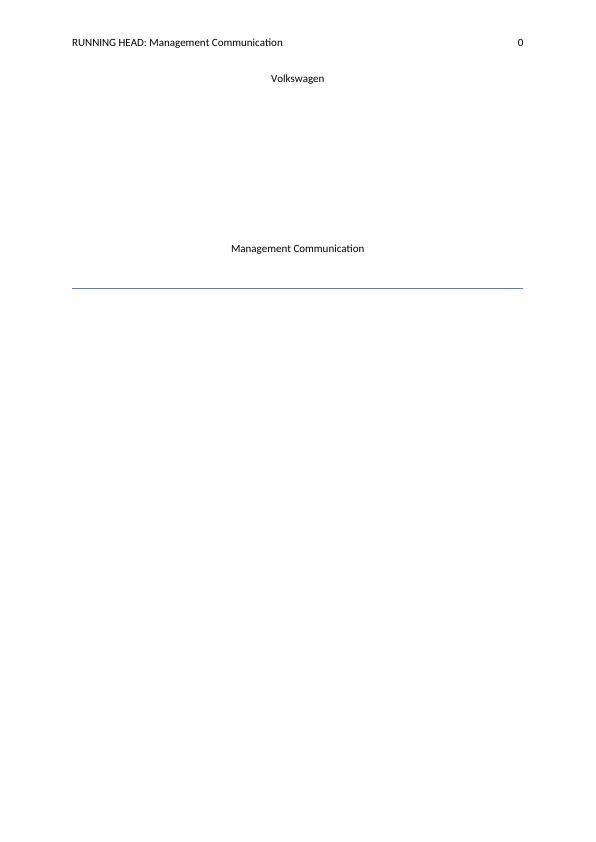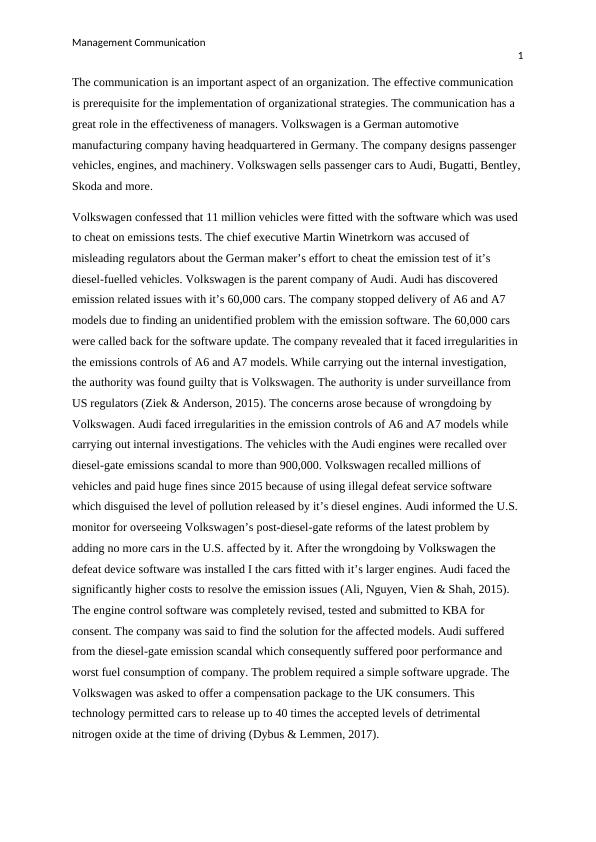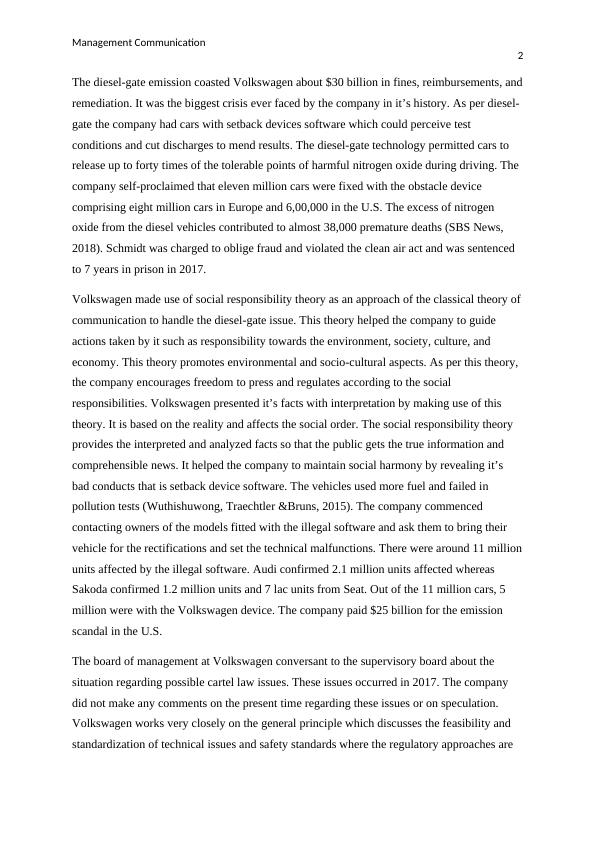Volkswagen: A Case Study on Management Communication
Identify a major business incident that occurred NOT LESS than 2 years ago and provide an analysis of the way the company handled the issue using communication and management theories and strategies.
8 Pages2870 Words66 Views
Added on 2023-06-11
About This Document
This article discusses the Volkswagen scandal and how management communication played a role in the crisis. It covers attribution theories, crisis management theories, and image restoration discourse theory. The article also provides details on the scandal, including the use of defeat devices, the impact on the environment, and the financial cost to the company. The article concludes with a discussion on how Volkswagen used social responsibility theory to address the crisis.
Volkswagen: A Case Study on Management Communication
Identify a major business incident that occurred NOT LESS than 2 years ago and provide an analysis of the way the company handled the issue using communication and management theories and strategies.
Added on 2023-06-11
ShareRelated Documents
End of preview
Want to access all the pages? Upload your documents or become a member.
Volkswagen Scandal: Causes, Consequences, and Steps Taken by the Company
|14
|1059
|243
Volkswagen’s Corporate Scandal: Diesel Fraud by Volkswagen
|10
|2638
|439
Report on Business Analysis
|6
|1531
|32
Goverance And Ethics Volkswagen
|17
|1186
|13
Volkswagen Scandal and Emission Fraud
|9
|3011
|91
Analysis of Volkswagen Unethical Practices
|12
|2830
|1



